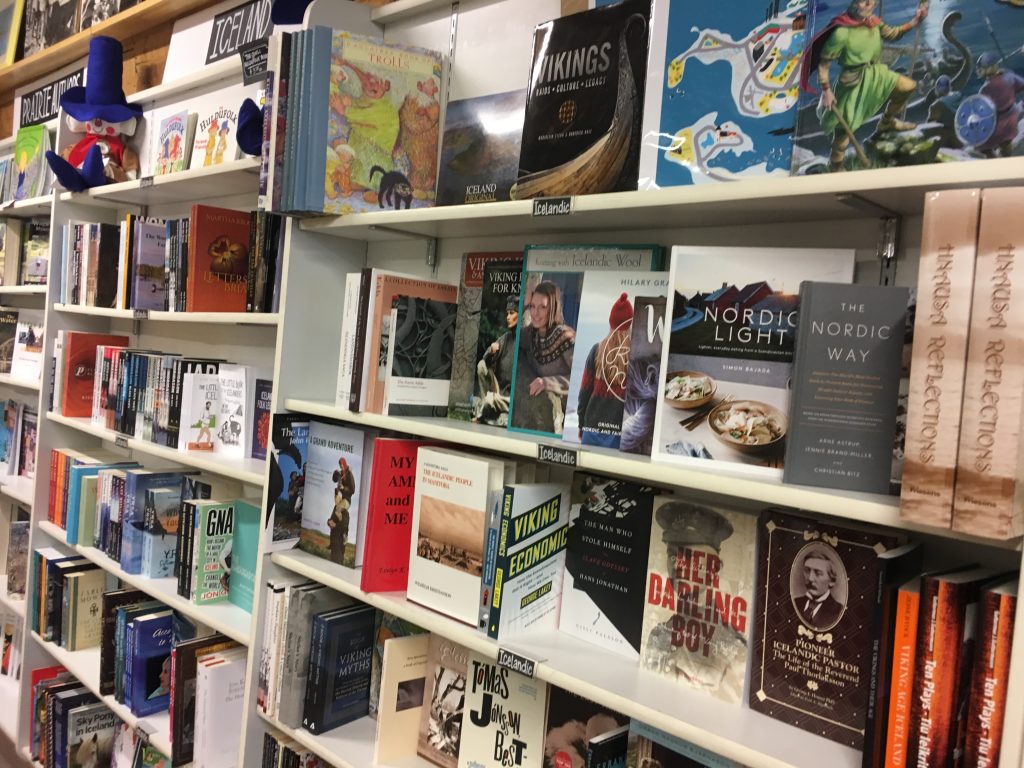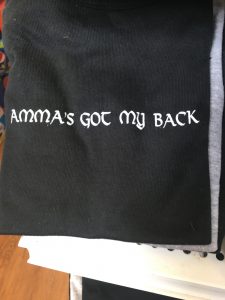On the shores of Lake Winnipeg in Manitoba, an unlikely settlement can be found. In the late 19th century, Icelanders fleeing famine and natural disasters headed for the central Canadian prairies in search of a new life. Their settlement, which they called Nýja-Ísland (“New Iceland”), was home to tens of thousands of Icelanders who bought into the Canadian dream. The Vestur-Íslendingar, or West Icelanders, held onto their language and traditions for an unusually long time thanks to their settlement’s relative isolation, and they even maintained their own government and laws until their territory was incorporated into Manitoba in 1880.
As we were stopping in Winnipeg, the capital of Manitoba, we thought it was only fitting to take the hour-and-a-half drive up to Gimli (named for the Norse “heaven”, home to the survivors of ragnarök), the capital of Nýja-Ísland, and have a look around. The town is home to the New Iceland Heritage Museum (1st Avenue; admission $7, concessions $6), which tells the story of the Vestur-Íslendingar. The settlers originally set up camp in canvas tents, but soon built basic log cabins which they moved into with their twenty or so stoves they had brought with them. The museum is also home to a small gift shop selling Vestur-Íslendingur-themed memorabilia. The ten-minute video is also worth a watch if you’re after a dramatised account of the Icelanders’ arrival in Manitoba.

The other must-see in town is H.P. Tergesen & Sons (1st Avenue) general store. The store has been in operation since 1899 and is one of the oldest buildings in Gimli. As well as clothes and trendy homewares, the shop has a literature section with books about the history of Gimli and New Iceland. It also has a selection of Icelandic fiction in English translation, although not much in Icelandic.

We spoke to a few of the town’s residents of Icelandic descent, and sadly we couldn’t find anyone who still spoke Icelandic. The Icelandic laissez-faire attitude still seems alive and well in the town, though (I got a student discount at the museum even though my student card had just expired).
We’d heard talk of an Icelandic bakery, but we were advised by the director of Íslendingadagurinn (the Icelandic Festival in Gimli, held on 17th June, Iceland’s national day) that it had closed down many years ago. We’d been hungering after some flatkökur and were hoping to have a taste of the famous vínarterta, an Icelandic cake that is extremely popular amongst Vestur-Íslendingar but more or less unheard of in Iceland. We were told that an entrepreneurial Icelander had moved to Gimli a couple of years ago to open an Icelandic bakery, which he ran for a year or two before packing up and moving to Toronto (the cheek). We looked up the Toronto bakery only to find it too had closed down. Looks like we’ll be needing another trip to Iceland soon.
Finally before leaving Gimli, we stopped at the Viking statue in the newly-renovated Viking park to take a picture.

A couple of days later, we ventured up to Hecla Island provincial park (parking permit $5). The park is on a flat, sandy and grassy island in Lake Winnipeg just over an hour’s drive north of Gimli. The village of Hecla (sic) on the east side of the island is home to some original log cabins built by the Icelandic settlers, as well as the original church and school (no longer in use). It was funny to see headstones in Icelandic in the village graveyard, although most of the newer epitaphs were in English.

The island is quite beautiful along the shores, although the interior is flat grassland like much of the rest of Manitoba.

On the way up to the park, we’d stopped at the general store in the village of Hnausa (means something like “clod of earth”), which sold all manner of Vestur-Íslendingur propaganda:



All in all, it was a bit of a surreal experience seeing so many Icelandic flags flying outside of Iceland and Icelandic place names and surnames popping up on street signs as we drove up the mind-numbingly straight road from Winnipeg. Although most Vestur-Íslendingar have lost their traditional language, they are still fiercely proud of their Icelandic heritage, which made Gimli an interesting diversion on our trip across Canada.
Somebody is missing Iceland??❤️